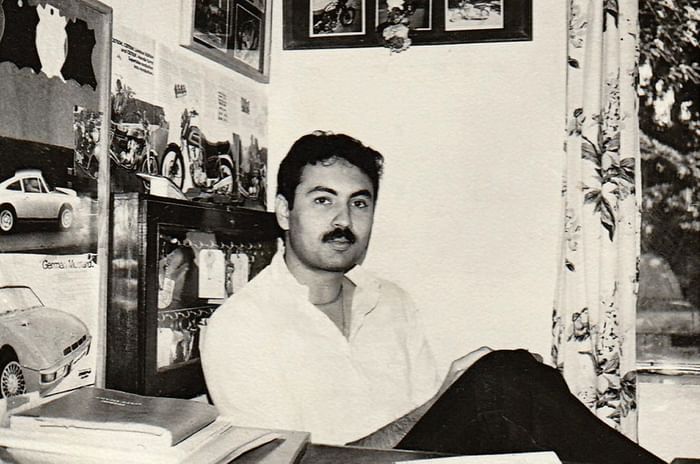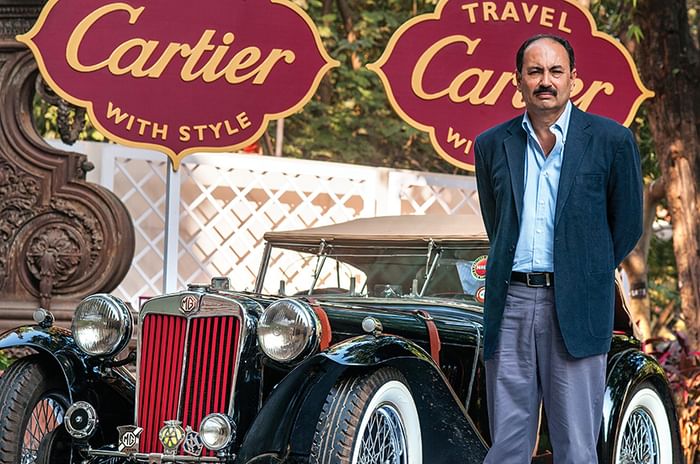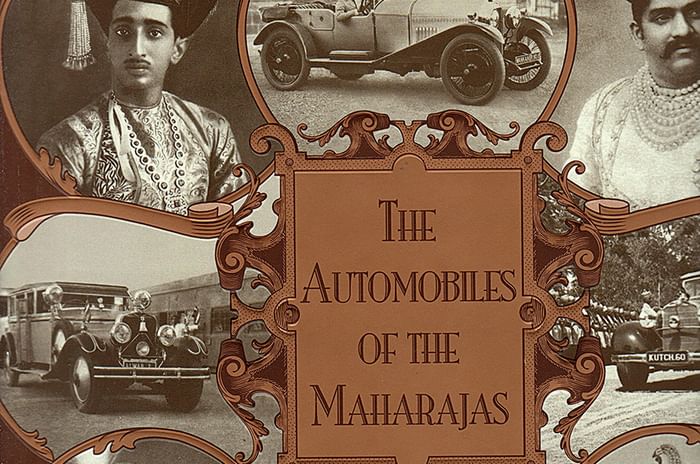You’ve seen him before. You’ve probably even read his name, possibly on the pages of this very magazine. Sometimes he’s seen with a vintage car at a Concours event, and sometimes he’s seen posing with his fellow jury members at the Autocar Awards. A casual glance at the name and picture, however, won’t tell you what Manvendra Singh of Barwani has done – and continues to do – for India’s automotive history.
The reason you see him mostly around vintage and classic cars is that Singh shares a connection with them that only a few others can claim to have. But we can’t get straight to that – his is a story worth telling from the beginning.

The son of a royal family, Singh was born in an era where independent India was just beginning to find its feet. As such, there was no car industry to speak of at the time. It would have only been expected that he goes on to become a lawyer or a doctor. But Singh’s interests lay elsewhere – in getting to know a car inside and out. It was this love for cars and his inquisitiveness that led to Singh eventually setting up his own car workshop in Indore. At the time, however, even he didn’t know what would come of it.
“I started Barwani Motor Works in 1979, dealing with the body and paint, mostly on Fiats. It was just by chance that a client of ours inquired if we could fix his 1923 Bentley. At that time, there was no restoration house except for our shop,” he says.

It was in 1982 that Singh got to work on his client’s Bentley 3-Litre. He was 30 at the time and completely smitten with the charm of vintage cars. And the obsession didn’t stop at just returning vintage cars to their past glory – it extended to knowing the minutiae of these cars that would otherwise never be unearthed.
“Born in a royal family, I was fortunate to have met and interacted with many Maharajas, who were the owners of these fabulous cars. I came to know why these cars were specially ordered and the purpose behind them, and also the way the Maharajas used them,” he says.
This immense knowledge of the Maharajas and their princely automobiles led to Singh co-authoring what is an essential read for admirers of vintage cars.

“In the early 1960s, many of these cars were exported out of India, and many foreign magazines wrote silly stories about them without researching the real history. My father would often read these magazines and criticise the authors, which prompted me to research and collect the original history and photographs of these cars. That is how The Automobiles of the Maharajas came about with my co-author Sharada Dwivedi, in 2003.
Since then, Singh has continued working on documenting the history of cars that were thought to have been lost with time. He doesn’t see himself as a restorer in the true sense of the word but notes that he has “just helped save a lot of very interesting and important cars” in his career. And speaking of his career, he quotes two examples as the highlights – the 1919 45HP Gold Daimler of Seth Hukumchand, and the 1912 Rolls-Royce Silver Ghost Throne car belonging to the sixth Nizam, Mir Mahboob Ali Khan. Both restorations left the world stunned with their level of detailing and their immaculateness.

Having heard of Singh and India’s vintage car riches, Cartier put together India’s first concours event, the Concours d’Elegance, in Mumbai, in 2008. Singh has curated every edition of this biennial exhibition and recalls the challenges the very first edition brought with it.
“It was very difficult to explain the international concept of a concours to the Indian vintage car owners and have them give us their automobiles. But I was able to convince them and showcase to the world the different types of cars that came to India. The first Cartier Concours was a huge success and it opened the Indian vintage and classic car scene to the world.”
The maiden Cartier Concours d’Elegance played a pivotal role in the opening up of the Indian vintage car scene and elevated it on the international stage as one of the world’s richest.

“The Cartier Concours completely changed the vintage and classic car scene in India. It has brought great enthusiasm to the hobby of owning and showcasing vintage and classic cars. People are importing and restoring cars in India, cars that could not be restored in Europe or America and saving them from ending up at the scrap yard. The quality of restorations is now world-class, and Indian cars are invited to the Concours around the world,” he adds.
Noting the Cartier Concours d’Elegance is still evolving, Singh says the show will grow to include cars that could be future Indian classics and hopes it will let more people get involved with vintage cars by selling tickets to the event, much like Pebble Beach.

To show for his decades of work, Singh now has the Lorin Tryon trophy, which he was awarded at the 2018 Pebble Beach Concours. The trophy, one of the highest individual accolades one can win at Pebble Beach, recognises an automotive enthusiast who has contributed significantly to the Concours and to the collector car world. Singh won it for the sheer effort he has invested in establishing India on the global vintage and classic car map. Not only has he been serving as an honorary judge at Pebble Beach since 2012, he also laid the foundation for the ‘Motor Cars of the Raj’ classes. And while this award is worth its weight in gold, so are all the cars Singh has helped keep alive with his restorations and research. His contribution to the cause of the vintage car movement in India can never truly be measured, but the fact that the world now recognises India’s storied automotive history is reason enough for every enthusiast in the country to know – and thank – Manvendra Singh of Barwani.

































